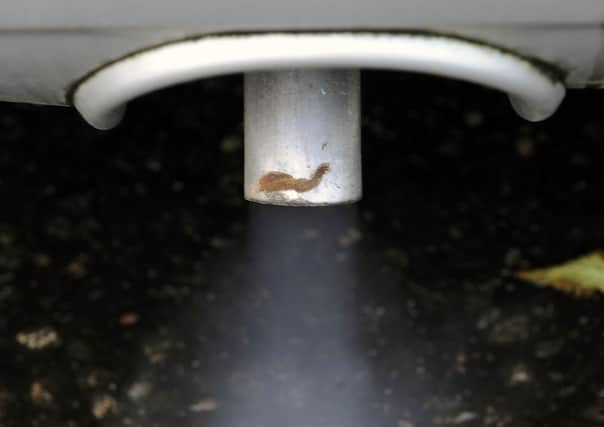Leaders: Practicality needed to improve air quality


But when Friends of the Earth Scotland warned in September that air pollution may be contributing to nearly twice as many deaths as had been previously thought it was clear serious action was long overdue.
At the time the campaign group, which drew on research by the UK Department for Environment, Food and Rural Affairs, described the evidence of a possible 3,500 deaths as “truly shocking and hugely alarming”. The figure was said to have been “tucked away” in a consultation for plans which both the UK and Scottish governments have been required to produce since being ordered by the Supreme Court in April to take action for flouting air quality laws.
Advertisement
Hide AdAdvertisement
Hide AdThe Scottish Government has certainly not gone far enough to satisfy Friends of the Earth with its strategy on air pollution, which includes a commitment to meet European legal air quality limits across Scotland by 2020.
The group says the government simply “doesn’t have a plan” to meet its own tough health targets and has not produced enough measures to get the most polluting traffic off our roads.
With levels of air pollution said to be breaking health standards in 32 official pollution zones across Scotland, it is a worry that Friends of the Earth has described the government’s response as “very disappointing”.
Where ministers have won support is with a suggestion in the action plan that low emission zones could be created as part of its strategy.
Friends of the Earth says it is “encouraging” that the kind of initiatives that exist in more than 200 locations across Europe could be in place in Scotland within the next years – but only if the government helps local authorities to fund them.
The proposals could mean the creation of minimum emission standards for cars in certain areas. Some vehicles could either be banned completely or face charges to enter town centres or the heart of cities. Such a proposal will undoubtedly attract support – particularly in the face of such concerning evidence about the impact of poor air quality in parts of Glasgow, Edinburgh, Dundee and Aberdeen.
Scotland’s environmental targets are deliberately challenging, and this kind of initiative could go some way towards meeting them. Potential solutions are needed which challenge traditional thinking on what is and is not acceptable.
But when it comes down to it, who would be prepared to accept that their car is banned from an area, or be happy to pay a charge for entering a certain area?
Advertisement
Hide AdAdvertisement
Hide AdCouncillors in Edinburgh put this to the test a decade ago, with a referendum on a congestion charge – which was roundly rejected. It might have seemed an environmentally-friendly idea which would improve the quality of life in the city centre, but not enough people were prepared to put up with the cost or inconvenience.
There is every chance low emission zones would meet with the same opposition and as yet there is no compelling evidence that such enforcements are justified. A more practical approach may be to focus more seriously on the management of traffic in problem areas. If that means starting again in some cases, so be it.
Motorsport’s missed opportunity
It is no exaggeration to say Susie Wolff looked as if she was on her way to make Scottish sporting history when she was snapped up by the Williams Formula One team in April 2012.
She may have been initially taken on in a development role, involving aerodynamic trials, simulator work and track tests, but her ambition back then was crystal clear – to start a Formula One race. As the Oban-born racer said at the time: “It’s up to me to prove that I possibly do have a chance to start a race for them.”
Last summer Wolff became the first female driver in over two decades to grace an F1 race weekend when she took part in the first practice session of the British Grand Prix.
But today the dream of tackling the “ultimate challenge” she spoke about back in 2012 is over, after she announced she would be quitting motorsport at the end of the current season. She admitted the beginning of the end came in March when her team ruled out using her as cover for Valtteri Bottas in Malaysia.
She admitted a female competitive driver in F1 is unlikely to happen anytime soon, saying: “I wanted and fought very hard to make it on to that starting grid but the events at the start of this year and the current environment in F1 the way it is, it isn’t going to happen.”
As Wolff said herself, she gave it her all. But sadly the motorsport will never know if she was good enough to make the grade because she was simply not given the chance. Wolff’s appointment now looks to smack of tokenism, or worse, a PR stunt.
Advertisement
Hide AdAdvertisement
Hide AdThere was little for Williams to lose and an awful lot to gain by putting her into an F1 race. The sport has now missed an opportunity to inspire other female drivers to try to break into what is quite clearly still a man’s world.